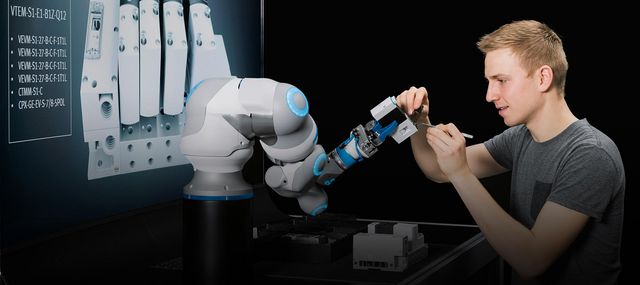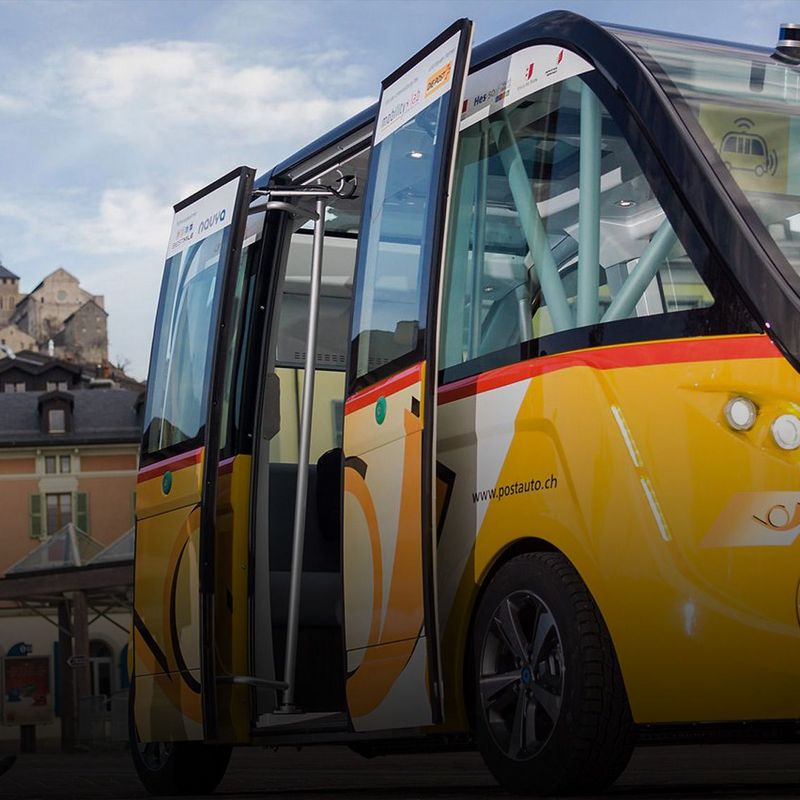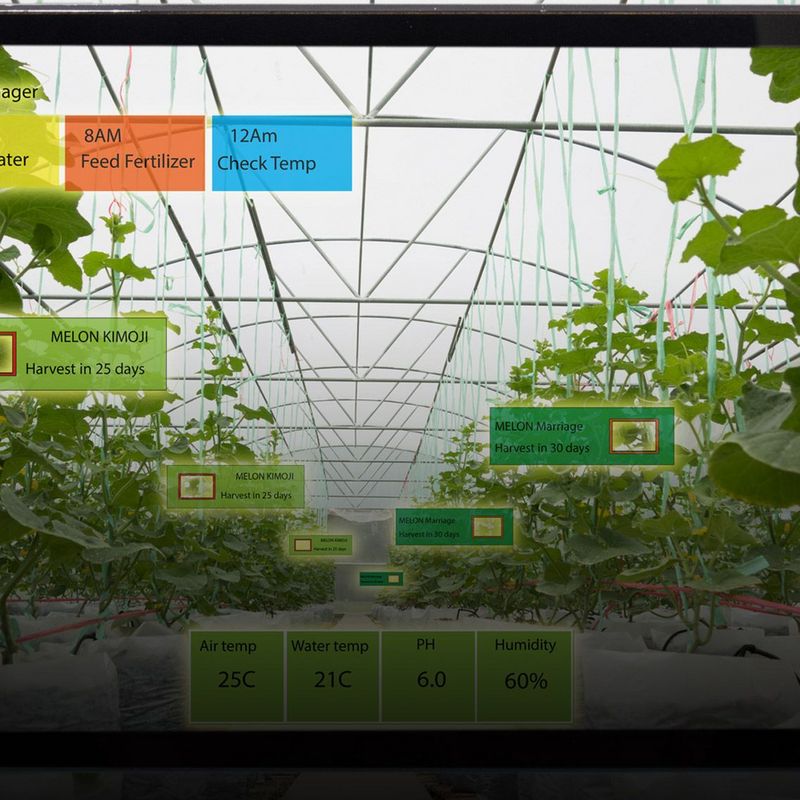10 January 2019
Where robots are used in industry, their tasks and work areas are usually strictly separated from those of human workers. And yet, robots are increasingly emerging from their protective cages. What are becoming known as “cobots” are supposed to work hand in hand with their human colleagues and to support production even in small and medium-sized enterprises.
Even where people and robots are already working in the same factory, they rarely get to see one another. This is because robots mostly get on with their work alone in separate safety zones. The future might see greater closeness in the collegial relationship between man and machine: What are becoming known as cobots are supposed to integrate smoothly into existing work places and work hand in hand with their human colleagues. While the cobot looks after the simple routine activities, the human workers can concentrate on more demanding tasks. Either that, or the cobot supports people directly by unloading a machine or by passing or holding components while a person works on them.
In fact, the idea is not entirely new. The first cooperative robots were developed by two professors from the Northwestern University in the US in 1996. In 2004, German robot pioneer KUKA sold its first cobots. And a cooperative robot has been working alongside human colleagues on a conveyor belt in the US BMW plant in Spartanburg since 2013. There are now over 40 lightweight robots working for the carmaker to relieve co-workers of physically strenuous or repetitive tasks that need to be performed with the same degree of precision even after the thousandth time.
Getting out of the cage
If robot manufacturers like Universal Robots, Festo or Omron have their way, these collaborative machines will in the future also become ever more prevalent in small and medium-sized enterprises. Classic industrial robots are in most cases as unaffordable as they are unprofitable for such companies. After all, the procurements costs are high; moreover, the robots and their security fences take up a lot of space and need to be set up and programmed by specialists in a process that can last several weeks. The smaller cobots are however not only significantly cheaper to purchase but can also be flexibly integrated into existing production chains and operated quickly and easily by a layman, for example via an app on a tablet. And since the lightweight robots can easily switch working environments and fields of application, they are also significantly better suited to smaller companies, which generally produce in smaller quantities and always have to reconfigure their production chains as and when other products are in demand on the consumer market.
Even big companies such as automobile manufacturers benefit from the greater flexibility of cobots.
But even big companies such as automobile manufacturers benefit from the greater flexibility of cobots. This is because they offer vehicles in twice as many series as used to be the case 20 years ago - and each series comes in a variety of models. So production plants have to be converted very quickly from one model to another. The safety fences for classic industrial robots get in the way here, says Markus Klaiber from gripper producer SCHUNK to Golem.de.
Sensitive grippers
But if man and machine are to collaborate, care must of course be taken to ensure that the robot doesn’t trap the fingers of its naturally thin-skinned colleagues or cause some other injury. This explains why the manufacturers of cobots set such great store by smooth surfaces without corners and rough edges. Because human employees are most likely to come into contact with the robot’s gripper, this is where the greatest risk of injury occurs. Manufacturer SCHUNK has for this reason equipped its gripper that goes by the name of Co-act JL1 with cameras and sensors. Intelligent software assesses the data and stops the gripper or redirects it when a human comes near.
Swabian manufacturer Festo pursues a different strategy. The BionicCobot is operated by compressed air. In the event of a collision, the pneumatic arm automatically yields. The Octopus gripper developed by Festo is also so constructed as to ensure that there is no danger of injury. The gripper, inspired by the tentacles of the eponymous sea creature, is made of soft silicone and is also operated using air. Meaning that it can pass objects to its human co-worker without the latter having to fear the loss of his hand.
As revealed by a survey conducted by the market research institute Innofact in behalf of Bosch, German workers in any case have little fear of contact with electronic colleagues. 50 percent of the respondents could imagine working with a robot if it were to take over the routine tasks.


